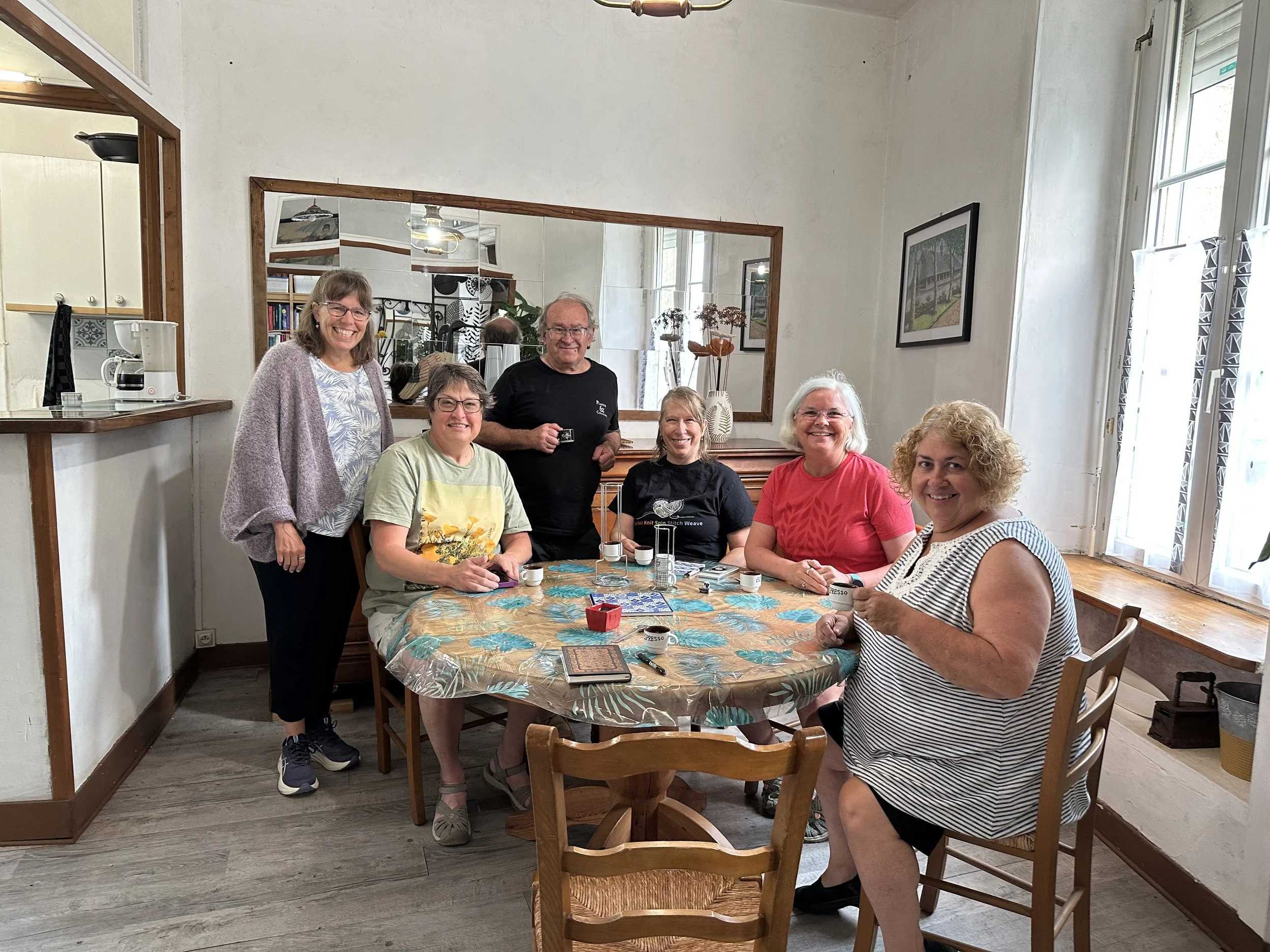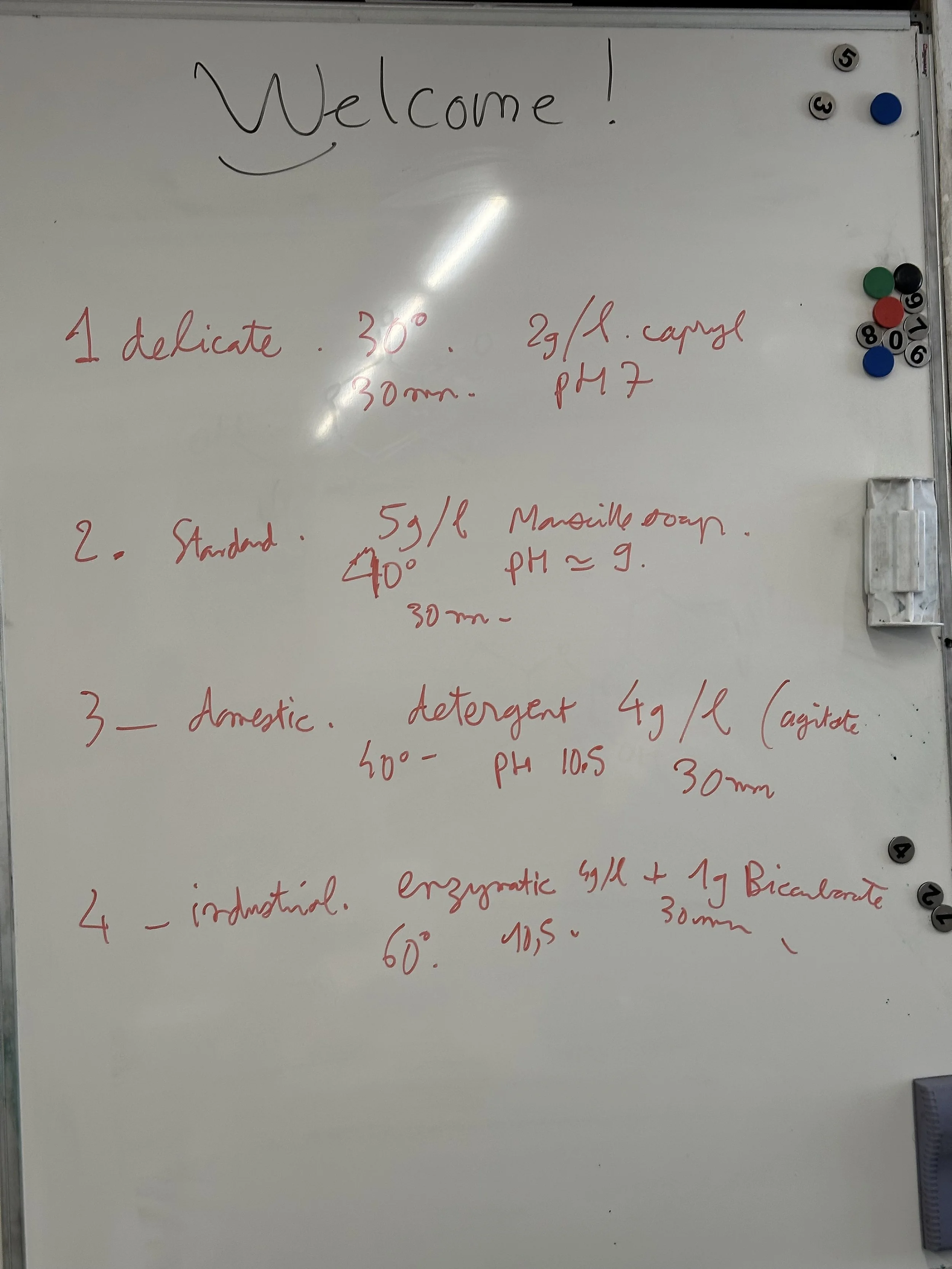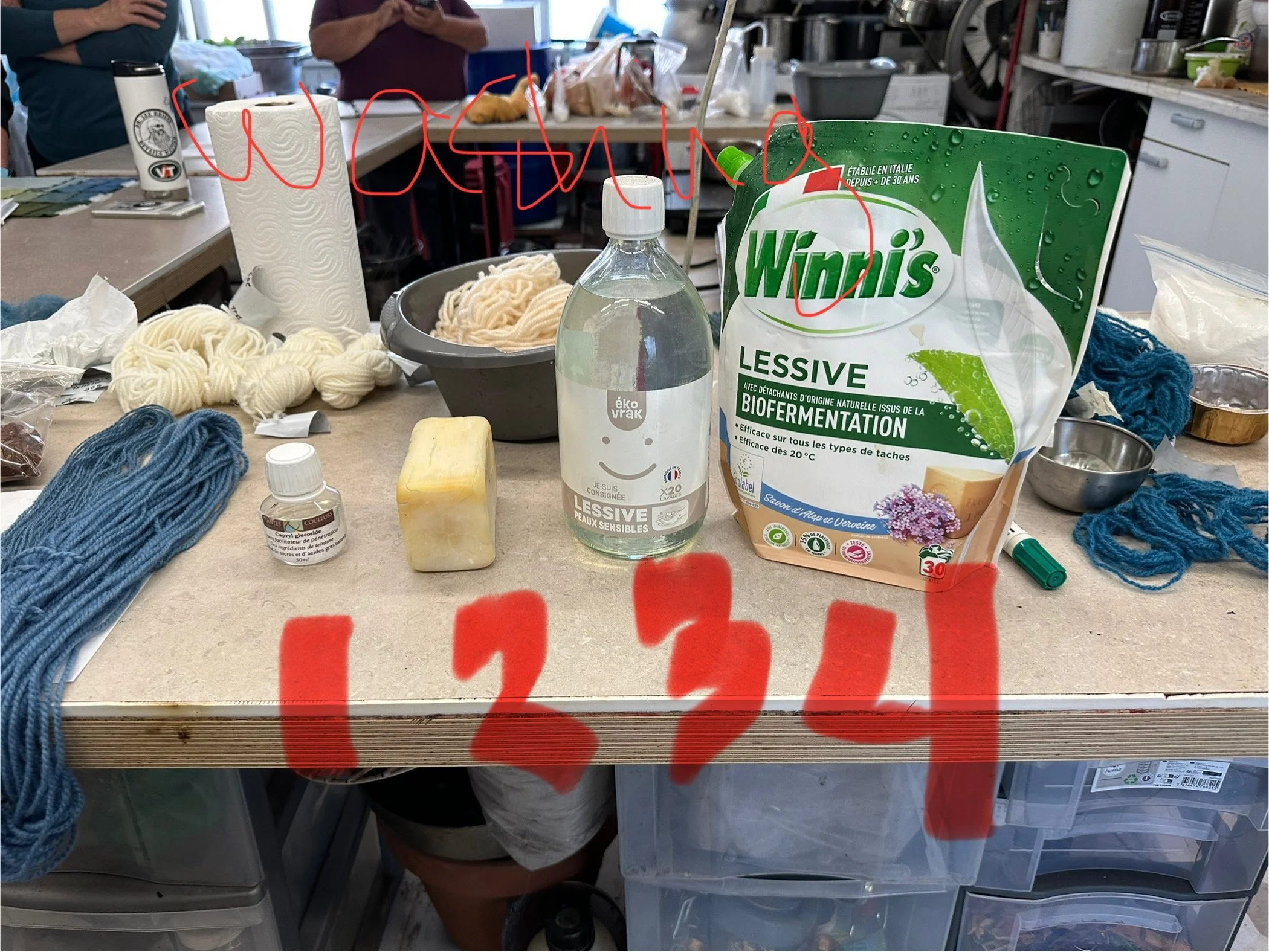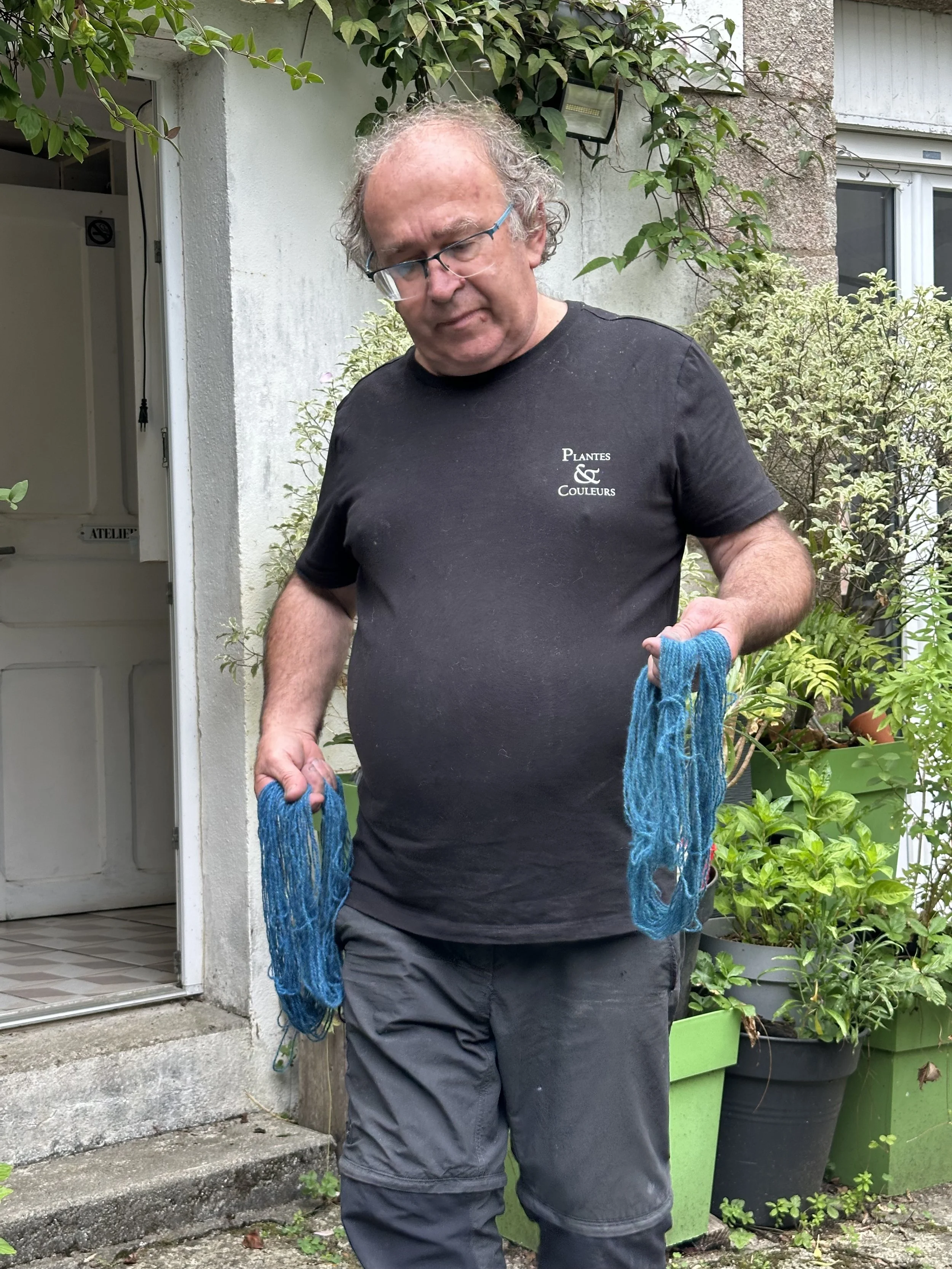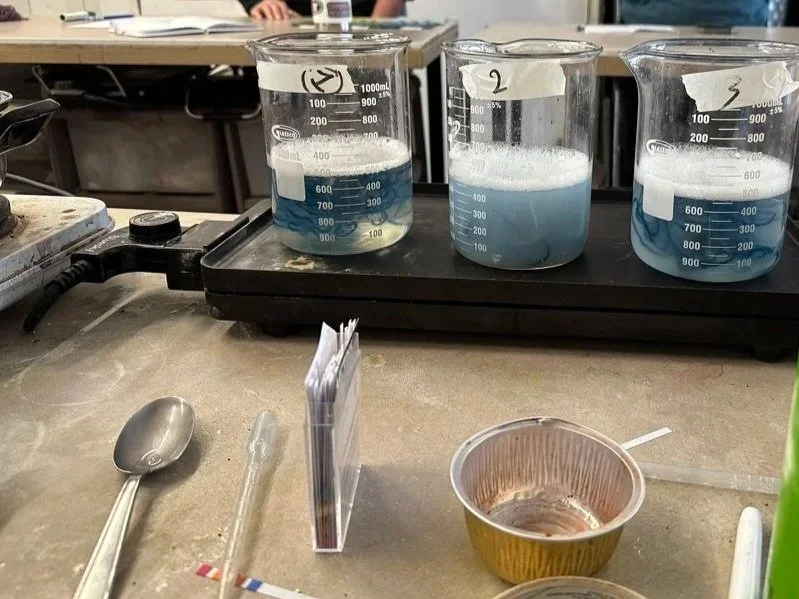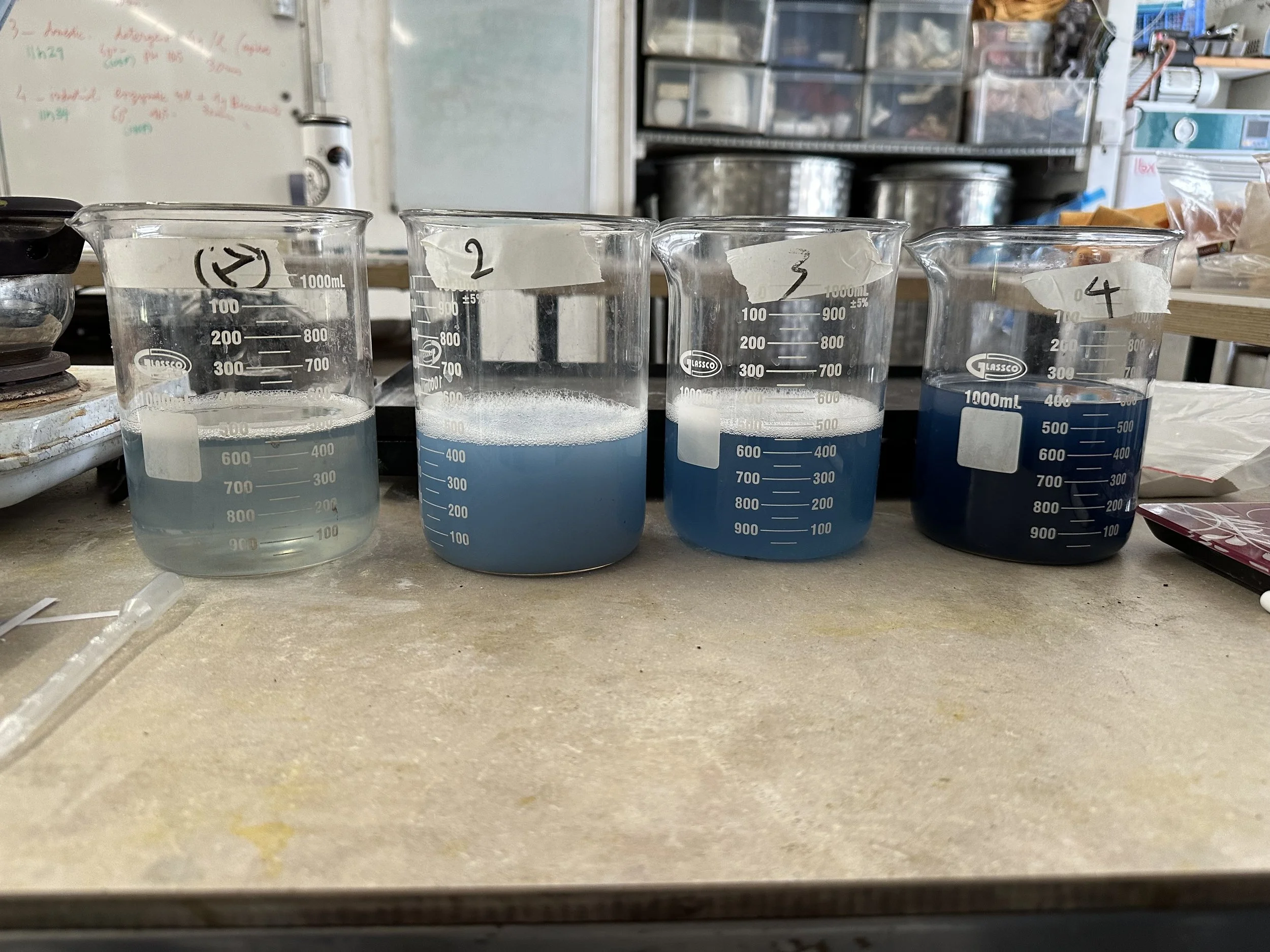How we wash our naturally dyed yarn * and why it matters
Did you know that there are International standards for testing textiles? And that specific conditions for the tests determine whether a garment should be considered “delicate” and have special washing instructions? If you have been using hand dyed yarn for a while, you know that most dyers tell you to gently wash your finished projects in cool water, by hand with a pH neutral soap, and then lay them flat to dry. In part, that is to maintain the qualities of the fiber, e.g., so that wool doesn’t felt or pill, but these instructions are also to help maintain the best color.
When we were in France for our natural dye retreat, one of the experiments focused on washing our yarn.
Our wool community with Michel Garcia at the start of our natural dye retreat (Summer, 2025)
For this test, we looked at 4 different conditions, that roughly correspond to 4 of the ISO standards.
For the delicate condition, we used capryl glucoside, which is a plant product that acts like soap to reduce water surface tension, but is pH Neutral. This would be like using Eucalan or Soak, or the neutral Dawn. The water was cool: 30° c (86° f).
The standard condition used the bar soap in Michel’s studio (Marseille soap) which is higher in pH. The temp was warmer (40°c).
The domestic condition used a laundry soap. Even for “sensitive skin,” this has a higher pH. The temp was 40°c.
The industrial condition used an enzymatic product for laundry, with a high temperature (60°c, which corresponds to 140° f).
We used wool yarn that had been dyed with Saxon Blue, a form of indigo that makes beautiful peacock blues.
We put the soaps in, heated them to their respective temperatures, put in the yarn samples, and held them in for 30 minutes each.
After we took the yarn out, you can already see the difference in the color of the water – look how much blue remains!
And the yarns themselves show differences!
The delicate (#1) had almost no color loss; whereas #2 had quite a bit of loss. The third condition (the domestic washing condition) did not have as much loss as the second. This was surprising to us because the pH of #3 was higher than in #2, so we expected more loss. Finally, the industrial condition #4, with an enzyme cleanser and the highest heat, had the most color loss.
When we wash our yarns, we start with warm water to rinse off extra dye particles that have not bound to the fiber, and then gradually put the yarn in cooler water (changing buckets). We wash with a pH neutral soap, starting with Orvus paste, until the water is clear. Then we do a final wash with Eucalan, making sure that it, too, runs clear for the final wash. Then we place the yarn in a spinner to remove excess water and hang the yarn to dry. With our finished objects, we wash in cool water with Eucalan, but we lay them flat and reshape them as needed.
We loved this experiment because of the practical implications for all of us makers who use hand-dyed yarns. That is — washing with cool water, using pH neutral soap, can help maintain the best color over time. We have a video on YouTube showing this experiment as well. Let us know what questions you might have!

